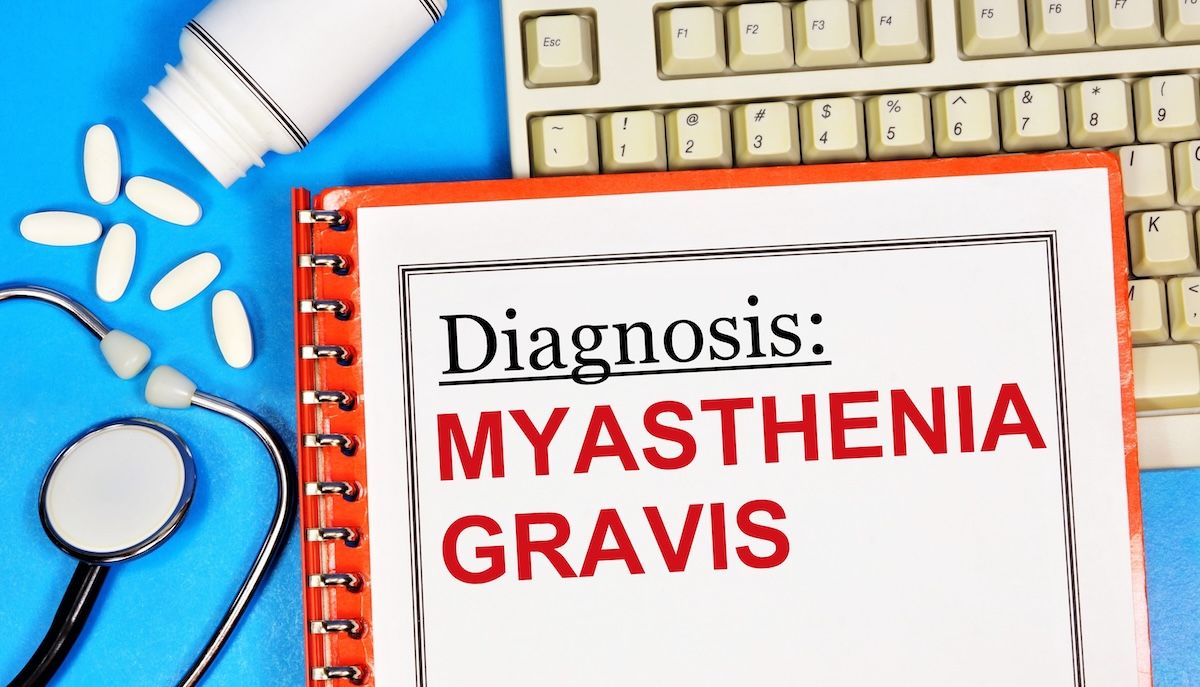- Center on Health Equity & Access
- Clinical
- Health Care Cost
- Health Care Delivery
- Insurance
- Policy
- Technology
- Value-Based Care
Efgartigimod Outperforms Standard IVIG in Averting Myasthenic Crisis
Efgartigimod shows promising efficacy over IV immunoglobulin in treating impending myasthenic crisis in patients with myasthenia gravis.
First-line efgartigimod could soon be more than a hypothetical therapeutic option for patients with acetylcholine receptor antibody-positive myasthenia gravis who appear to be heading toward myasthenic crisis, according to new data published in Neurotherapeutics.1
The novel neonatal Fc receptor (FcRn) blocker antagonist is currently given to patients when they fail to respond to or are intolerant of other therapies they have received,2 with experts cautioning that its use should be reserved for third-line or later administration.3
This present analysis1 compared the effectiveness of 2 therapies:
- Intravenous (IV) infusion of efgartigimod at 10 mg/kg once weekly for 4 weeks (n = 30)
- IV immunoglobulin (IVIG) n = 21) at 0.4 g/kg/day for 5 consecutive days
Patients in the efgartigimod treatment group were older both in overall age, with a mean (SD) age of 63.97 years (13.93) vs 56.67 years (14.98) (P = .080), and age at onset of myasthenia gravis, at a median of 65.50 years (range, 48.75-68.75) vs 61.00 years (range, 36.00-66.00). Most patients in each group were male (63.33% and 71.43%, respectively), had class I MG (46.67% and 42.86%), and could not identify the cause of their impending myasthenic crisis.
Patients who received either treatment between June 1, 2023, and November 1, 2024, at Tangdu Hospital of The Fourth Military Medical University in China’s Shaanxi province were included. Treatment effectiveness was evaluated using changes in Myasthenia Gravis Activities of Daily Living (MG-ADL) and Quantitative Myasthenia Gravis (QMG) scores from week 1 after treatment initiation to week 4 after treatment initiation. Potential myasthenic crisis was defined as rapid symptom progression over 4 weeks and having Myasthenia Gravis Foundation of America type IIIb or IVb disease. Adjunctive treatment was adjusted as needed.
Patients who exhibited significant improvement via MG-ADL and QMG scores increased with each week in both groups, but the efgartigimod data demonstrated superiority to intravenous immunoglobulin. | Image Credit: © Николай Зотов-stock.adobe.com.

At baseline, the authors could not identify significant between-group differences in MG-ADL scores (P = .302), but improvements seen as early as week 1 of treatment continued to differentiate the efgartigimod-treated cohort from the IVIG cohort, and this difference was deemed to be significant by week 4 of treatment (P < .001). In addition, according to QMG scores, peak efficacy of efgartigimod had occurred by week 4 of treatment (P < .001).
Drilling down to the results seen in each week, efgartigimod proved superior at each measure after baseline, according to mean (SD) MG-ADL and QMG scores:
- MG-ADL:
- Baseline: 10.93 (3.18) vs 11.90 (3.40)
- Week 1: 5.23 (2.64) vs 6.75 (2.57)
- Week 2: 2.73 (2.39) vs 4.85 (2.28)
- Week 3: 1.90 (2.44) vs 4.30 (2.18)
- Week 4: 1.33 (2.23) vs 4.65 (3.56)
- QMG:
- Baseline: 20.43 (3.80) vs 19.62 (3.93)
- Week 1: 13.30 (3.86) vs 13.60 (2.06)
- Week 2: 9.50 (3.03) 12.80 (2.65)
- Week 3: 8.30 (3.23) vs NA
- Week 4: 7.73 (3.20) vs 11.85 (4.97)
Patients who exhibited significant improvement via MG-ADL (≥2 points) and QMG (≥5 points) increased with each week in both groups, but the efgartigimod data again demonstrated superiority to IVIG:
- For MG-ADL: 83.3% vs 71.4% at week 1 compared with 96.7% and 85.7% at week 4
- For QMG: 70.0% vs 47.6% at week 1 compared with 96.7% and 71.4% at week 4
Length of hospital stay was also shorter among the patients treated with efgartigimod compared with those treated with IVIG, and no patients treated with efgartigimod progressed to myasthenic crisis vs 1 patient from the IVIG group.
The authors explain that their results “provide robust evidence for the clinical application of efgartigimod,” and that their data can be used as a jumping-off point for future investigations of the FcRn blocker. Not only was there significant clinical improvement in patients treated with the medication, but it also showed itself to be safe to receive and to be capable of producing rapid symptom improvement.
Still, there are limitations to these results. The data may have been subject to confounding and selection bias, the sample size was small, the conclusions were based solely on clinical data, and only patients with acetylcholine receptor antibody-positive myasthenia gravis were included.
References
- Guo R, Sun C, Huang X, et al. Efficacy and safety of efgartigimod versus intravenous immunoglobulin in early intervention of acetylcholine receptor antibody-positive impending myasthenic crisis: a retrospective cohort study. Neurotherapeutics. Published online September 5, 2025. doi:10.1016/j.neurot.2025.e00730
- Vyvgart Hytrulo/Vyvgart. Prescribing information. Argenx; 2025. Accessed October 9, 2025. https://vyvgarthcp.com/gmg/dosing/overview
- Efgartigimod alfa (monograph). Drugs.com. Updated May 10, 2025. Accessed October 9, 2025. https://www.drugs.com/monograph/efgartigimod-alfa.html
